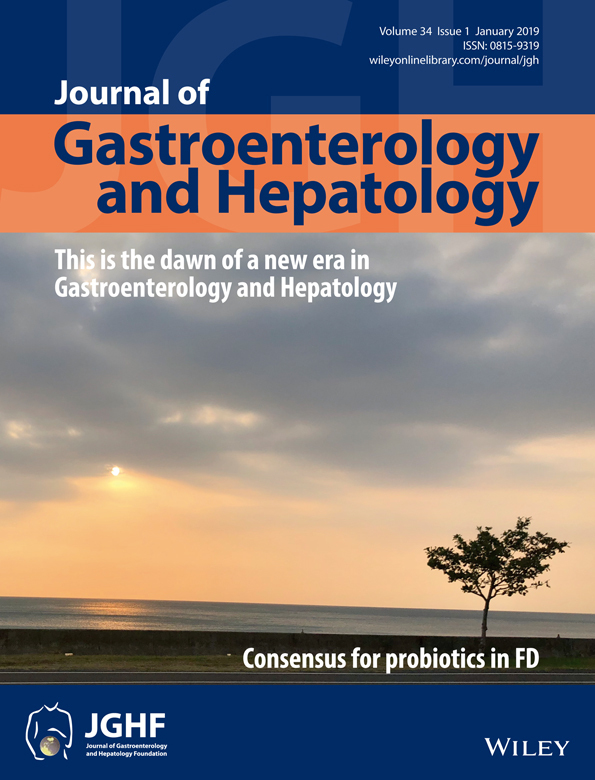Association of serial serum major histocompatibility complex class I chain-related A measurements with hepatocellular carcinoma in chronic hepatitis C patients after viral eradication
Abstract
Background and Aim
Major histocompatibility complex class I chain-related A (MICA) genetic variants and their serum levels (sMICA) were associated with the development of hepatitis C virus-related hepatocellular carcinoma (HCC) in untreated cohorts. The dynamic changes in serial sMICA levels and their association with HCC in the post-curative status are elusive.
Methods
Single nucleotide polymorphism rs2596542 of MICA and serial sMICA levels were analyzed in chronic hepatitis C patients with a sustained virologic response after antivirals. Forty-two patients who developed HCC and 84 age-matched, gender-matched, and cirrhosis propensity score-matched non-HCC controls were compared. Serial sMICA levels were measured within 6 months before treatment initiation (pre-sMICA), 6 months after the end of treatment (post-sMICA), and on the last visit before the development (or not) of HCC (last-sMICA).
Results
Cox regression analysis revealed that last-sMICA was the only predictive factor of HCC development (hazard ratio/95% confidence interval: 2.27 (per 1 log pg/mL increase)/1.672–3.082, P < 0.001). Patients without HCC development showed a significantly reduced trend of sMICA levels during follow-up (trend P = 0.001), which was observed only in GG genotype (trend P < 0.001) but not A allele carriers (P = 0.88). In contrast, patients with HCC showed an increased trend of sMICA levels (trend P = 0.024). However, only the GG genotype “high expressors” (trend P = 0.06) but not A allele carriers (P = 0.18) showed a correlation of substantially increased trend of sMICA levels and HCC development.
Conclusions
Serial sMICA levels were associated with HCC development in SVR patients. The clinical utility of this finding is restricted to MICA rs2596542 GG genotype carriers.




